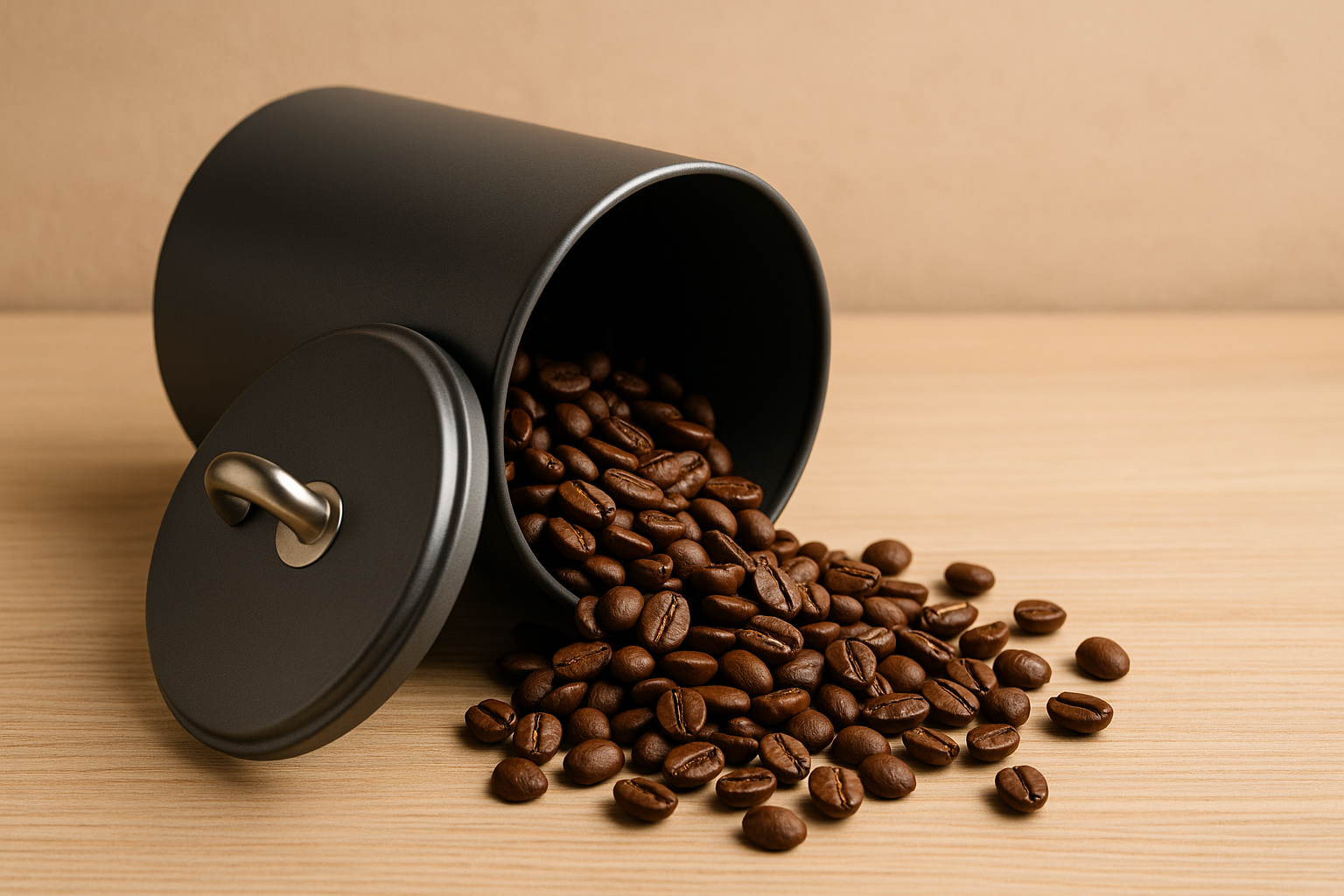If you’re spending money on high-quality coffee beans, it only makes sense to protect that investment by storing them properly. But you might be surprised at how quickly coffee can lose its flavor—even before the bag is empty.
Exposure to air, light, heat, and moisture can degrade your beans, leading to stale, flat, or bitter-tasting coffee. The good news? With a few simple storage strategies, you can preserve freshness and enjoy better-tasting coffee every day.
In this guide, we’ll cover everything you need to know about how to store coffee beans correctly—what to avoid, what to use, and how to tell when your beans have gone stale.
Why Coffee Loses Freshness
Coffee is a natural, porous product that begins to degrade shortly after roasting. The biggest enemies of freshness are:
- Oxygen (oxidation dulls flavors and aromas)
- Moisture (promotes mold and spoilage)
- Heat (accelerates chemical breakdown)
- Light (especially sunlight, which damages flavor compounds)
Together, these factors cause your coffee to go stale faster than you think—even in sealed bags.
How Long Does Coffee Stay Fresh?
Whole Beans:
- Peak freshness: 3 to 14 days after roasting
- Good quality window: Up to 30 days (in ideal conditions)
- Stale window: After 4–6 weeks, most beans lose their complexity
Ground Coffee:
- Begins to degrade within minutes of grinding
- Loses noticeable flavor within 24–48 hours, even in a sealed container
Best practice: Always buy whole beans and grind them just before brewing.
Signs Your Coffee Beans Are No Longer Fresh
- Flat or dull aroma
- Muted or “burnt rubber” flavor
- Lack of sweetness or acidity
- Weak body or watery mouthfeel
- Bitter aftertaste not typical of dark roast
If your once-vibrant coffee starts tasting lifeless, stale beans are often the culprit.
How to Store Coffee Beans Properly
1. Use an Airtight Container
Keep air out at all costs. Once you open the original bag, transfer the beans to an airtight container with a strong seal.
Best options:
- Opaque ceramic canister with silicone gasket
- Stainless steel coffee vaults
- Vacuum-sealed coffee containers (like Fellow Atmos)
Avoid:
- Ziplock bags
- Open roll-top pouches
- Unsealed Tupperware
2. Store in a Cool, Dark Place
Heat and light degrade coffee oils and volatile aroma compounds. Store your container in a pantry cabinet, drawer, or shelf away from the stove or sun.
Avoid:
- Countertops near ovens or windows
- Above the fridge
- Near any heat source
3. Do Not Refrigerate Coffee
It might seem like the fridge is a good idea—but it’s not. Refrigerators are humid environments that can:
- Introduce moisture into the container
- Cause condensation when you take the beans out
- Absorb odors from surrounding foods
Unless you live in a tropical climate with no air conditioning, the pantry is a better bet.
4. Freezing Coffee: Yes or No?
Freezing coffee can preserve beans for long-term storage, but only under the right conditions.
Yes, freeze your beans if:
- You buy in bulk and won’t finish a bag for several weeks
- You divide the bag into small, airtight, one-brew portions
- You use a vacuum-sealer or strong zip bags with minimal air
No, don’t freeze if:
- You access the bag daily (constant opening introduces condensation)
- You don’t seal the beans properly
When using frozen beans:
- Let them come to room temperature before opening the bag to prevent condensation
- Never refreeze after thawing
Bonus Tips for Maximum Freshness
- Buy smaller quantities (250g or 12oz bags) more often
- Ask your roaster to grind only what you need (if you don’t have a grinder)
- Look for valve-sealed bags that let gas escape but block air
- Don’t store coffee near spices or cleaning products
Ideal Coffee Storage Setup
Here’s how to build a great coffee storage setup at home:
| Item | Purpose |
|---|---|
| Opaque airtight container | Blocks light and oxygen |
| Small scoop or scale | Keeps dosing consistent |
| Dark cabinet or drawer | Reduces exposure to heat and light |
| Fresh beans (weekly) | Ensures peak flavor every brew |
Optional: Add a desiccant packet (like used in food products) to fight moisture in humid environments.
Best Coffee Storage Containers (2025 Picks)
| Product | Features | Price Range |
|---|---|---|
| Fellow Atmos | Vacuum-sealed, sleek design | $30–40 |
| Airscape Canister | Steel body, two-way valve lid | $25–35 |
| MiiR Coffee Canister | Twist seal, eco-friendly | $35–45 |
| OXO Coffee POP | Airtight, budget-friendly | $15–25 |
| IKEA KORKEN Jar | Affordable, strong seal | $5–10 |
Final Thoughts: Treat Coffee Like a Fresh Ingredient
If you want your home coffee to taste amazing every day, treat your beans like you would fresh bread or produce. Buy what you need, store it well, and use it while it’s fresh.
The difference in flavor is night and day. When beans are stored properly, every cup reveals the complex, sweet, aromatic profile the roaster intended. You’ll taste notes of chocolate, citrus, berries, and caramel—not cardboard and ash.
So go ahead—protect your beans, and your brew will thank you.

Marcelo Oliveira is a coffee enthusiast and content creator specializing in barista skills, brewing methods, equipment reviews, coffee-related health insights, and fascinating curiosities from the coffee world. With a deep passion for every step of the brewing process, he turns technical knowledge into accessible and engaging content for both beginners and seasoned coffee lovers. Marcelo’s goal is to help readers appreciate the full experience of coffee—from bean to cup.
